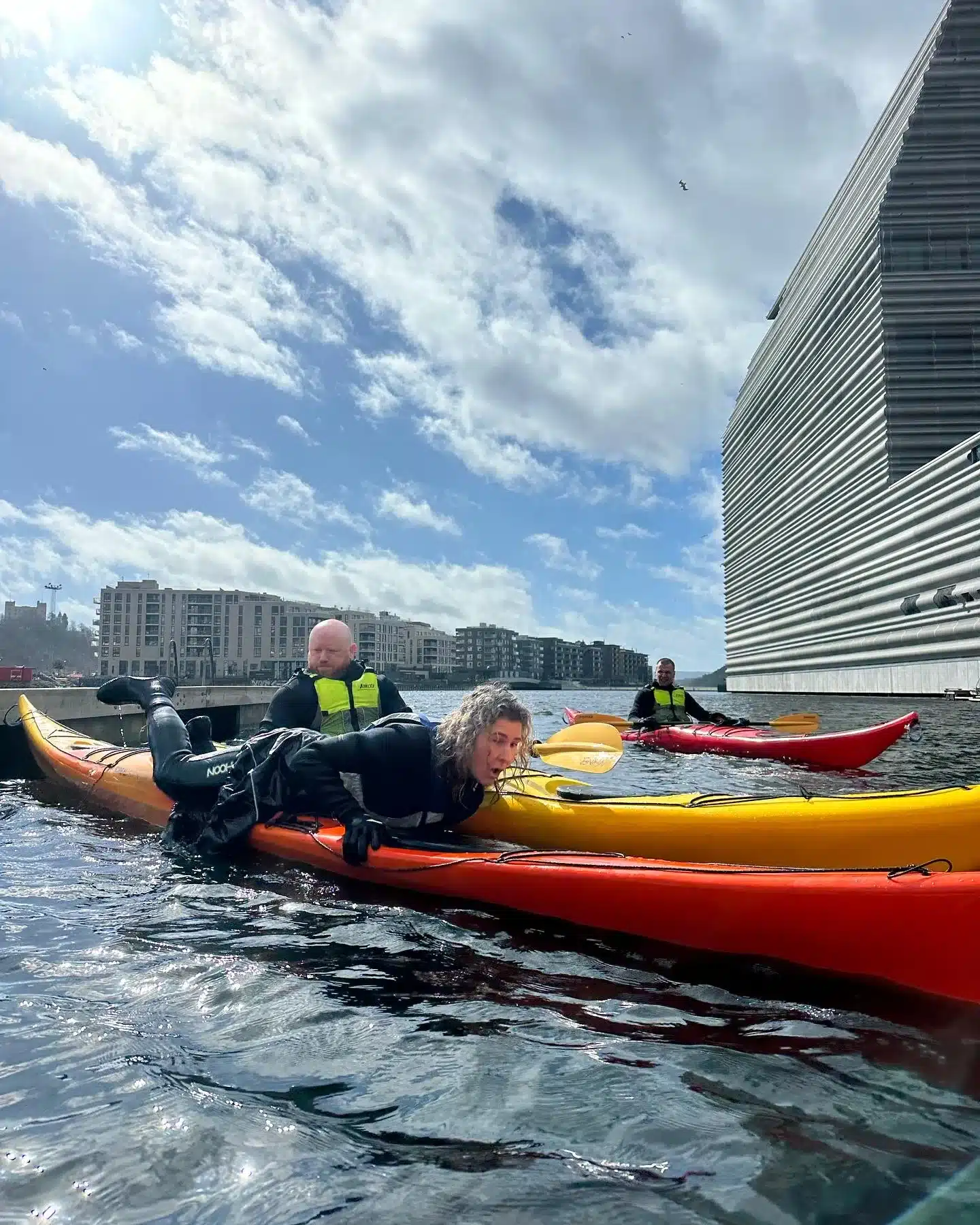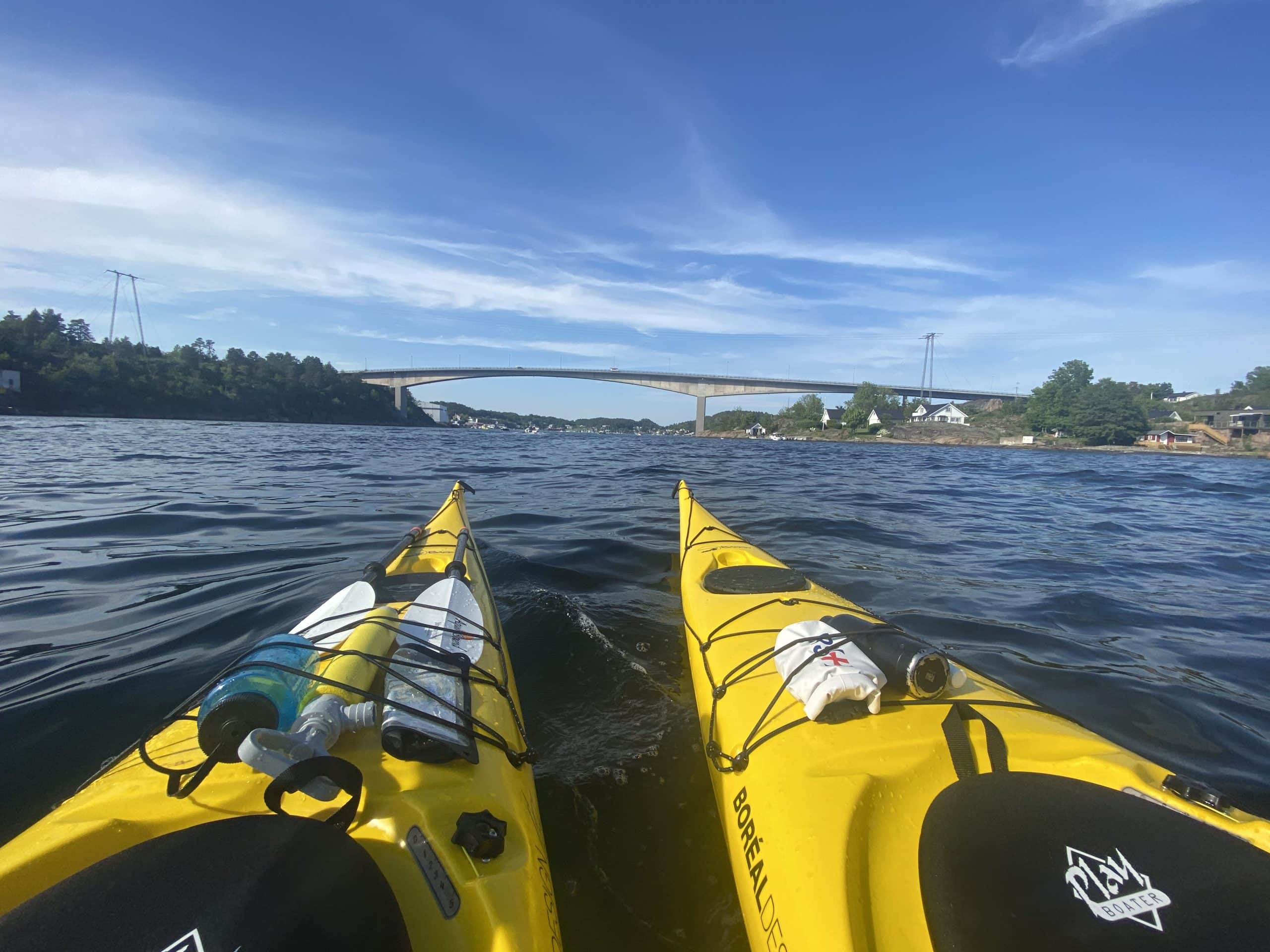
The NPF Våttkort course builds the foundational skills to becoming a safe and happy paddler!
Are you a goat wanting to learn how to sea kayak, so you can explore the Oslo Fjord and beyond? If so, you are at the right place. With Mad Goats, you can learn all the beginner kayaking skills on our våttkort courses, which are necessary to make you a safe and independent sea kayaker. After taking the våttkort course you will be capable of going on your own sea kayaking adventures. And not just on the Oslo Fjord, but all around Norway! – check out our blog about sea kayaking in Lofoten for some inspiration.
The 3 basic skills you will learn on our våttkort courses
In this blog we will go over 3 foundation skills you will learn on our våttkort sea kayaking courses: basic paddle strokes, the sea kayak self-rescue, and the sea kayak buddy rescue aka assisted rescue. We teach this skills on both our Introkurs Hav våttkortkurs and Grunnkurs Hav våttkortkurs.
1. Basic Paddling Strokes
- Forward Paddle Stroke
- Turning Paddle Stroke
- Side Stroke
Learning these 3 paddle strokes will give you good control over your kayak, so that you can move forwards, turn your kayak, change direction and pull yourself sideways – giving you full control and manoeuvrability.
Here are some videos of Mad Goats founder, Tomas Hansson, explaining these 3 strokes.
NOTE: these are just the foundational skills, and of course there is more to learn. On our NPF våttkort Grunnkurs and/or Teknikkurs, we will include teaching other skills. These will include towing one another using a towline, how to pack a sea kayak, when and how to use your rudder or skeg, the bracing/support stroke, and much more!!
2. The sea kayaking buddy rescue / assisted rescue
Learning to rescue one another is an important sea kayaking skill. The key is to stay calm, as then everything will slow down and you will be able to think more clearly. Check out this short Instagram video of one of our våttkort courses held from Lysaker, Oslo.
The key points:
- stay calm
- check that the person being rescued is ok
- unless the person being rescued is panicking or disabled, then get them to help with the rescue
- If you are the one being rescued then stay with the kayak and hold onto your paddle
- if your are the rescue’er then stow your paddle away so that you can use two hands when turning the kayak
- If you are the rescue’er then make sure to hold on tight and get your body over onto the other kayak so as to secure it when the swimmer pulls themselves onto the kayaks
- If you are the swimmer, make sure you pull yourself up horizontally and not vertically – it is much easier sliding onto the kayaks rather than pulling yourself up
- If you are the swimmer, make sure you stay low on your stomach and put your legs all the way into the cockpit before trying to turn around and sit up!
Go ahead and watch this video on our YouTube channel to see the full rescue. Here is a fun photo from our 2-day våttkort Grunnkurs held from Lysaker, Oslo.
3. How to do the sea kayak self rescue (selvredning i havkajakk)
Learning the self rescue is critical. A lot of people say “ well why would you not just roll?”. That is a good questions and we at Mad Goats very much encourage that all kayakers learn how to roll, but the reality is, shit can happen, and you might find yourself out of your kayak – and you might be alone! So, learning the sea kayaking self rescue is not only really fun, but is also very practical!
Key things to think about:
- remember to always stay with your kayak and hold onto your paddle
- when emptying your kayak, make sure to turn your kayak first to break the air seal created by your cockpit on the surface of the water
- once your have broken the air-pocket by turning your kayak, then kick with your legs and push the bow of your kayak up so that the water runs down from the leg area, bits the bulkhead behind your seat, and pours out, then be quick to turn you kayak upright before it falls back down!
- when climbing onto your kayak, make sure you pull yourself from the very end of the kayak but still from the side. This just means you have less kayak to pull yourself over
- when moving your body up towards the cockpit, maker sure your sprayskirt is not going to get caught on anything, keep your legs spread and in the water for support and keep your body weight in the centre – don’t make fast and jerky movements as this will throw your balance off!
- when you do commit to get your bum over the the kayak seat and down, make sure to do this part fast and smooth, as it is when you will be the most unstable
- once your bum is down, you will be more stable, but now take it slow getting your legs back into the cockpit
4. Surprise content – how to roll a sea kayak (Kajakkrulle)
We are also going to add in video on how to roll a kayak. We do also teach sea kayak rolling courses in Oslo and Sjoa, in addition to offering all the Norwegian Paddle Federation våttkort courses. Don’t hesitate to reach out if you want to learn to roll. We will also leave a link to our how to roll a kayak blog, where you can find and download our “how to roll a kayak PDF.” – Check out our instructor Tomas Hansson showing off the roll on the Sjoa River.
Check out this video and feel free to share it and subscribe to our channel. May the strength, wisdom and humour of the goat always be with you! Maaeeeeeeaaæææææhhhhhh!!!!!!
Thanks for reading and watching. We hope that you found some value here. For anything kayaking or stand up paddling related, in Oslo and/or Sjoa, get in touch and we will find an activity that is a good fit for you.
“Catch you on the water!”
Ps, check out our instructor Tomas Hansson showing how to do the sea kayak self-rescue (hav kajakk selredning) – this can be you in no time! Lets goat!



